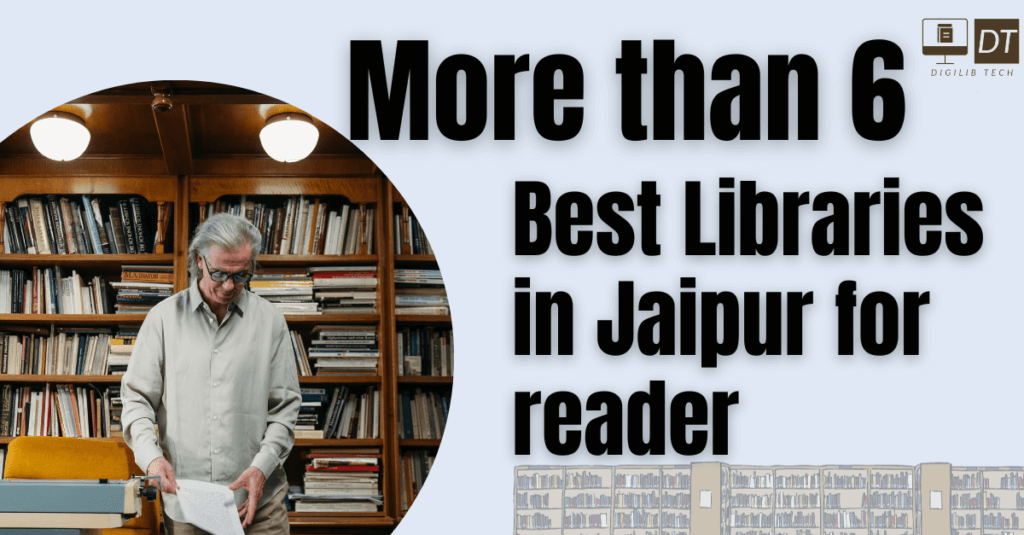Introduction to the Richard J. Riordan Central Library
Nestled in the bustling heart of downtown Los Angeles, the Richard J. Riordan Central Library stands as a beacon of knowledge and cultural heritage. Established in 1926, this iconic institution has long been a cornerstone of the community, offering a vast collection of resources and serving as a hub for educational and cultural activities.

The Central Library’s architectural grandeur is immediately striking, with its blend of historic and modern elements that reflect the evolving nature of Los Angeles itself. Designed by renowned architect Bertram Goodhue, the building showcases a unique combination of Mediterranean Revival and Art Deco styles, making it a visual marvel in the urban landscape. The library’s striking murals, sculptures, and intricate tile work contribute to its designation as a historical landmark.
Beyond its architectural appeal, the Richard J. Riordan Central Library plays a vital role in the cultural and intellectual life of Los Angeles. It houses millions of books, periodicals, and digital resources, catering to the diverse needs of the city’s residents. The library’s extensive archives offer a treasure trove of historical documents and rare collections that attract researchers and history enthusiasts from around the world.
Moreover, the Central Library is deeply embedded in the community fabric, hosting a wide array of programs and events that foster learning and engagement. From author readings and educational workshops to art exhibitions and public lectures, the library serves as a dynamic space where ideas are exchanged, and creativity is nurtured. Its commitment to inclusivity and accessibility ensures that people from all walks of life can benefit from its offerings.
In essence, the Richard J. Riordan Central Library is more than just a repository of books; it is a symbol of Los Angeles’ rich cultural tapestry and a testament to the enduring importance of public libraries in fostering informed and connected communities.
Architectural Marvel: Exterior Design
The Richard J. Riordan Central Library stands as a testament to architectural brilliance, blending ancient Egyptian and Mediterranean Revival influences to create a visually striking exterior. Completed in 1926, this iconic structure is not only a repository of knowledge but also an emblem of Los Angeles’ rich cultural heritage. Bertram Goodhue, the visionary architect behind the design, meticulously incorporated elements that pay homage to historical grandeur while ensuring the library remains a contemporary landmark.
The exterior of the library is adorned with features that captivate and enchant visitors. One of the most notable elements is the pyramid-shaped roof, which draws inspiration from ancient Egyptian architecture. This unique feature serves as a beacon, symbolizing the pursuit of knowledge and enlightenment. Complementing the pyramid are intricate mosaics that embellish the facade, adding a layer of artistic sophistication. These mosaics, with their vivid colors and detailed patterns, reflect the Mediterranean Revival style, creating a harmonious blend of cultural influences.
Decorative elements abound throughout the library’s exterior, each contributing to its status as an architectural marvel. The use of bas-reliefs, depicting scenes of historical and mythical significance, adds depth and narrative to the structure. Carved stone motifs, reminiscent of ancient civilizations, further enhance the building’s aesthetic appeal. These elements, combined with the library’s grand entrance and stately columns, create a visual delight that invites admiration and exploration.
The original completion of the library in 1926 marked a significant milestone in Los Angeles’ architectural landscape. Bertram Goodhue’s vision was to create a space that not only housed literary treasures but also stood as a monument to human creativity and ingenuity. Today, the Richard J. Riordan Central Library continues to embody this vision, its exterior design serving as a bridge between the past and the present, a true gem in the heart of Los Angeles.
Interior Art and Design
The Richard J. Riordan Central Library stands as a testament to Los Angeles’ commitment to preserving cultural and artistic heritage. The interior of the library is a harmonious blend of historical elegance and contemporary design, making it a visual feast for visitors. Upon entering, one is immediately greeted by an array of artistic elements that transform the library into more than just a repository of books.
Among the most striking features are the numerous murals that adorn the walls. These murals, painted by various artists, depict scenes from literature, history, and mythology, creating a narrative tapestry that enriches the library’s ambiance. The vibrant colors and intricate details of these works invite visitors to pause and reflect, adding a contemplative dimension to their library experience.
Sculptures are another significant aspect of the library’s interior design. Scattered throughout the building, these sculptures range from classical figures to modern abstract forms. Each piece is thoughtfully placed to complement its surroundings, contributing to the library’s serene and inspiring atmosphere. Notable works include the statue of a seated philosopher contemplating a book, symbolizing the pursuit of knowledge and wisdom.
The library’s tile mosaics, especially those in the main rotunda, are masterpieces in their own right. Crafted with precision and care, these mosaics feature intricate patterns and designs that reflect both historical and contemporary artistic influences. The interplay of colors and shapes creates a dynamic visual experience, drawing the eye and inviting closer inspection.
One cannot discuss the interior art of the Richard J. Riordan Central Library without mentioning the bronze zodiac chandelier. This stunning fixture hangs majestically in the center of the rotunda, casting a warm, inviting glow. The chandelier, adorned with zodiac symbols, serves as both a functional light source and a piece of art, embodying the library’s blend of utility and beauty.
Together, these elements—murals, sculptures, tile mosaics, and the bronze chandelier—create an environment that is as intellectually stimulating as it is aesthetically pleasing. The artistic and architectural features of the Richard J. Riordan Central Library not only enhance the visual appeal of the space but also contribute to a rich, immersive experience for all who visit.
Historical Murals by Dean Cornwell
Dean Cornwell, a prominent American illustrator and muralist, left an indelible mark on the Richard J. Riordan Central Library through his masterful murals. These murals, commissioned in the late 1920s, encapsulate significant moments in California’s history, thereby enriching the library’s cultural fabric. Cornwell, known as the “Dean of Illustrators,” had a prolific career that spanned several decades. His versatile skill set and artistic vision made him an ideal candidate for this monumental project.
The four major murals created by Cornwell serve as visual narratives that trace the evolution of California. The first mural, “The Discovery of California,” captures the moment when Spanish explorers first set eyes on the land, marking the beginning of a new era. The imagery is vivid and compelling, drawing viewers into the historical context of exploration and discovery.
The second mural, “The Missions,” illustrates the establishment of missions by Spanish missionaries. These missions played a pivotal role in shaping California’s early social and cultural landscape. Cornwell’s use of rich colors and detailed figures highlights the missionaries’ efforts to cultivate the land and foster relationships with the indigenous population.
The third mural, “The Founding of Los Angeles,” celebrates the birth of the city itself. This piece is imbued with a sense of optimism and progress, depicting settlers and indigenous peoples working together to build a new community. The intricate details and dynamic composition of this mural make it a focal point within the library.
The final mural, “The Era of the Ranchos,” portrays the period of Mexican land grants and the rise of ranchos in California. This mural captures the pastoral beauty and economic significance of the rancho period, emphasizing themes of agriculture and land stewardship.
These murals by Dean Cornwell do more than adorn the walls; they serve as educational tools and cultural treasures. Each mural not only tells a story but also invites viewers to reflect on the complex history and heritage of California. Through these artworks, Cornwell has significantly enhanced the cultural value of the Richard J. Riordan Central Library, making it not just a repository of books but also a sanctuary of art and history.
Balancing Old and New: Architectural Evolution
The Richard J. Riordan Central Library stands as a testament to the seamless integration of historical and modern architectural elements. Established in 1926, the building’s original design, crafted by architect Bertram Grosvenor Goodhue, epitomizes the grandeur of early 20th-century neoclassical architecture. Featuring intricate carvings, grand archways, and a visually commanding exterior, the library quickly became an iconic landmark in the heart of Los Angeles.
Over the decades, the library has undergone several renovations and expansions to address the evolving needs of its patrons while maintaining its historical integrity. A significant transformation occurred in the late 1980s, spearheaded by the architectural firm Hardy Holzman Pfeiffer Associates. This renovation included the addition of the Tom Bradley Wing, named after the city’s first African American mayor. The wing introduced a contemporary design juxtaposed with the original structure, effectively doubling the library’s floor space and incorporating advanced technological and functional capabilities without compromising the original aesthetic.
Another key renovation took place in the early 2000s, focusing on the restoration of the library’s decorative elements and updating its facilities to meet modern accessibility standards. This project involved meticulous preservation efforts, ensuring that historical features like the rotunda’s ornate ceiling and the murals by Dean Cornwell remained intact. Simultaneously, the renovation introduced modern amenities such as enhanced lighting, climate control systems, and state-of-the-art computer labs, thereby improving the library’s functionality for contemporary users.
The blending of old and new is not only evident in the structural aspects but also in the library’s landscape. The Maguire Gardens, established during the 1980s expansion, provide an inviting outdoor space that complements the building’s architecture with lush greenery and art installations. These gardens serve as a tranquil oasis amid the bustling city, reflecting the library’s commitment to preserving its historic charm while embracing modern urban life.
Through these thoughtful renovations and expansions, the Richard J. Riordan Central Library has successfully balanced its historical legacy with the demands of the present day, creating a dynamic and versatile space that continues to serve as a cultural and educational hub for the Los Angeles community.
The Library’s Extensive Collection
The Richard J. Riordan Central Library boasts an extensive collection that serves as a cornerstone for research, education, and personal enrichment within the Los Angeles community. With over six million books and other materials, this library is one of the most comprehensive public libraries in the United States. It offers an impressive array of genres and subjects, catering to diverse interests and academic pursuits.
The collection spans fiction and non-fiction works, encompassing everything from contemporary bestsellers to timeless classics. For those seeking specialized knowledge, the library houses a multitude of academic and professional texts in fields such as science, technology, history, art, and law. The library’s commitment to inclusivity is evident in its extensive multilingual collection, ensuring access to information for non-English speaking patrons.
Of particular note are the library’s rare and special collections, which include invaluable manuscripts, first editions, and archives that chronicle the rich history of Los Angeles and beyond. Scholars and history enthusiasts can delve into the library’s extensive archives to uncover rare documents and artifacts that provide a window into the past. These collections are meticulously preserved and made accessible to the public, underscoring the library’s role as a guardian of cultural heritage.
The Richard J. Riordan Central Library also serves as a vital educational resource. Students, educators, and lifelong learners will find an abundance of materials to support their academic endeavors. The library’s vast reference collection and digital resources provide indispensable tools for research, aiding in the pursuit of knowledge across various disciplines.
In addition to its educational and research functions, the library fosters personal enrichment by offering a plethora of resources for hobbies, personal development, and leisure reading. From comprehensive guides on gardening and cooking to extensive collections of travel literature and self-help books, the library caters to the varied interests of its patrons, ensuring that everyone can find something that resonates with them.
Community Programs and Events
The Richard J. Riordan Central Library stands as a beacon for community engagement, offering a diverse array of programs and events that cater to all age groups and interests. These initiatives are designed to foster a sense of community while promoting lifelong learning among Los Angeles residents. One of the library’s hallmark offerings is its series of author talks, which regularly features both local and internationally renowned writers. These events provide attendees with unique insights into the creative process and an opportunity to interact directly with authors.
In addition to author talks, the library hosts a variety of workshops that cover an extensive range of topics. From digital literacy classes aimed at helping individuals navigate new technologies, to creative writing workshops that inspire budding authors, these sessions are designed to equip participants with valuable skills and knowledge. Educational programs are another cornerstone of the library’s community initiatives. These programs often include financial literacy seminars, STEM activities for children and teens, and history lectures that delve into both local and global topics.
One notable event that exemplifies the library’s commitment to community engagement is the annual “Summer Reading Challenge.” This program encourages children and adults alike to immerse themselves in reading during the summer months. Participants are rewarded with incentives such as free books and certificates, fostering a love for reading and learning. Another impactful event is the “Job Readiness Fair,” which provides job seekers with access to resume-building workshops, interview preparation sessions, and networking opportunities with local employers.
These programs and events not only enrich the lives of those who attend but also strengthen the community as a whole. By providing a venue for education, creativity, and personal growth, the Richard J. Riordan Central Library plays a pivotal role in the cultural and intellectual fabric of Los Angeles. The positive impact on attendees is evident in the continual high attendance and enthusiastic feedback, evidencing the library’s success in engaging and uplifting the community.
Visiting the Richard J. Riordan Central Library
Located in the heart of downtown Los Angeles, the Richard J. Riordan Central Library stands as a testament to the city’s commitment to culture, education, and architectural beauty. The library is situated at 630 W. 5th Street, easily accessible via various modes of public transportation. Visitors can take the Metro Red, Purple, Blue, or Expo Lines to the 7th Street/Metro Center Station, followed by a short walk to the library. Additionally, numerous bus routes serve the area, making it convenient for commuters from different parts of the city.
The library’s operating hours are designed to accommodate a wide range of schedules. It is open Monday through Thursday from 10:00 AM to 8:00 PM, Friday and Saturday from 9:30 AM to 5:30 PM, and Sunday from 1:00 PM to 5:00 PM. These extended hours ensure that everyone has the opportunity to explore the vast resources and exhibits housed within this iconic institution.
To make the most of your visit, start by exploring the library’s must-see areas. The historic Rotunda, with its stunning murals and ornate ceiling, is a visual delight that captures the essence of the library’s grandeur. The Tom Bradley Wing, named after the former mayor of Los Angeles, offers a modern contrast with its sleek design and houses the popular Children’s Literature Department. Additionally, the Maguire Gardens provide a serene outdoor space for relaxation and contemplation.
Guided tours are available for those who wish to delve deeper into the library’s history and architecture. These tours are led by knowledgeable docents who provide fascinating insights into the library’s past and present. For those interested in self-guided exploration, informative brochures are available at the information desk.
Amenities at the Richard J. Riordan Central Library include free Wi-Fi, public computers, and comfortable reading areas. There is also a café on-site where visitors can enjoy a refreshing beverage or a light snack. With its extensive resources, beautiful architecture, and welcoming atmosphere, the Richard J. Riordan Central Library offers a rich and rewarding experience for all who visit.













